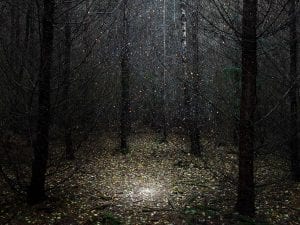Reaching up to 50 feet and more than 150 years of age, the saguaro is the largest cactus in the USA. It’s also one of the most useful of all plants growing in Arizona. “The fruits can be eaten raw, cooked into an edible gruel or syrup, or fermented into an intoxicating beverage,” explains photographer and educator Ryan Parra, who has spent 10 years researching the flora of the southwestern USA. “The seeds, which contain high levels of vitamin C, can be gathered and stored for long periods of time to be eaten later. The woody ribs from the dry skeletons are extremely strong and useful as building materials and first aid splints. Whether making candles, chicken feed, medicine, food or alcohol, the uses for the saguaro go on.”


The saguaro is just one entry in Vivarium, Parra’s collection of photographs and digital botanical illustration composites. The project charts edible and medicinal plants found throughout Arizona and beyond. It’s a kind of expanded “still life”, translating scientific techniques out into the environment and then back into art. Vivarium is Latin for “place of life”, and refers to an enclosed space in which plants or animals are held for observation. For Parra, this concept is wrapped up in an array of associations: curiosity, containment, control. It also taps into humanity’s long-held fascination with documenting and understanding our planet.

Circular slides are transposed onto rocky landscapes and dry plains, held up by gloved hands or magnified up close. We meet the marcgravia, used to treat a variety of ailments – from headache to wounds. Then there’s the sacred creosote bush, known as the “plant that cures everything.” The story of the Organ Pipe cactus is particularly notable; as the global climate warmed at the end of the last Ice Age, it slowly migrated north from its warm, dry tropics, up to the Sonoran Desert, arriving in Arizona only 3,500 years ago. It thrives in extremely warm climates with south facing rocky slopes, and dense populations are only found in the Organ Pipe Cactus National Monument area, along with a few other select locations in Northern Mexico. Here, Parra joins a list of acclaimed artists, from Anna Atkins in the 1800s to Eddo Hartmann today, who harness photographic techniques to research and reveal facts about the natural world.


All images courtesy Ryan Parra
1. Slide #1: Carnegiea Gigantea, Saguaro, Saguaro National Park, AZ, 2018, 24X36
2. Slide #10: Marcgravia sp, Shingle Plant, Costa Rica, 2019, 20X30
3. Slide #7: Lycium Andersonii, Wolfberry, Superstition Mountains, AZ, 2021, 24X36
4. Slide #21: Larrea Tridentata, Creosote, Joshua Tree National Park, CA, 2017, 20X30
5. Slide #3: Marking Useful Plants, Superstition Mountains, AZ, 2018, 24X36





